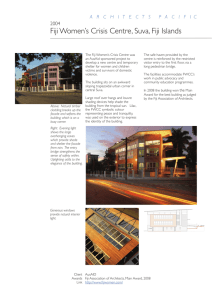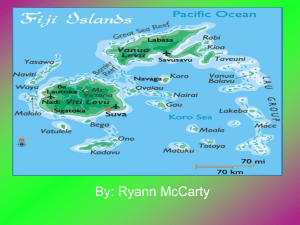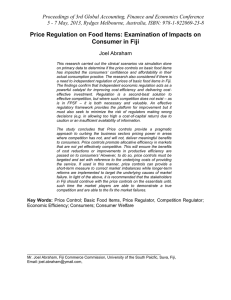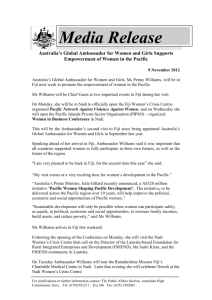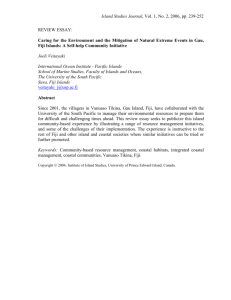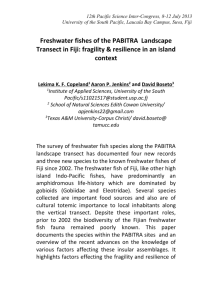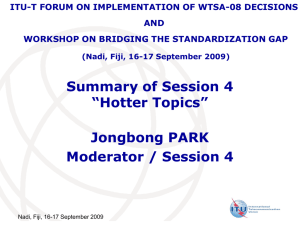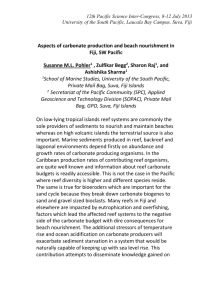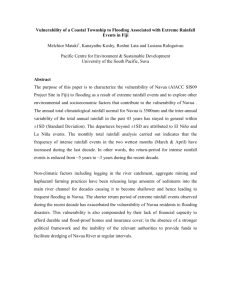Baseline Climatology of Fiji and Current Climatic Trends
advertisement
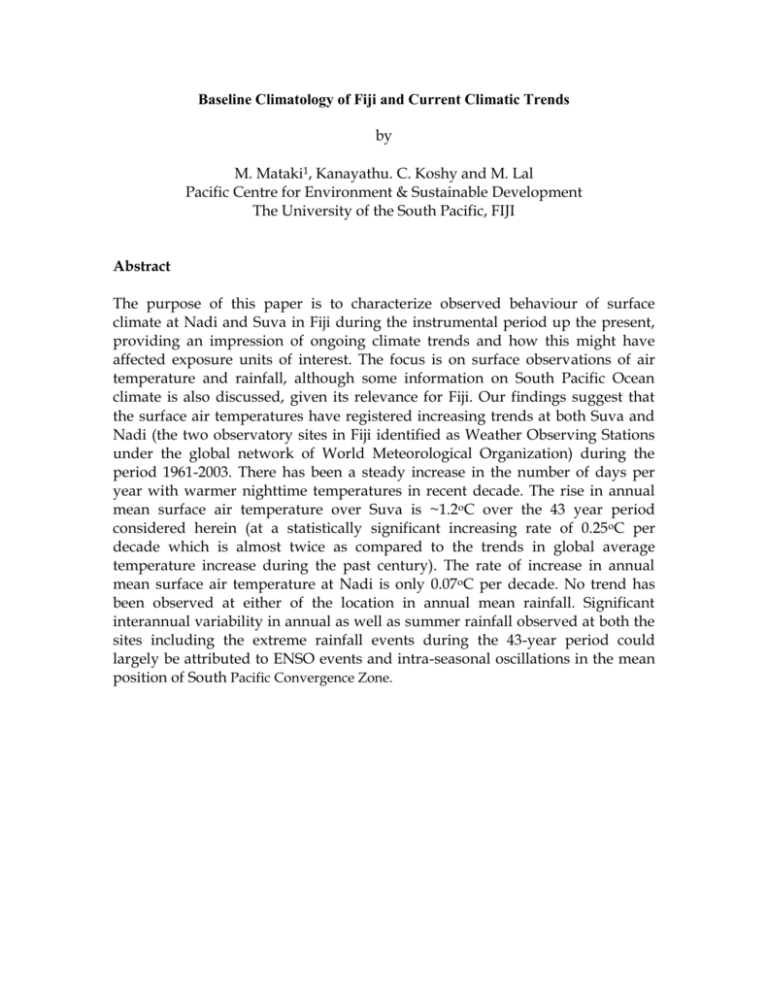
Baseline Climatology of Fiji and Current Climatic Trends by M. Mataki1, Kanayathu. C. Koshy and M. Lal Pacific Centre for Environment & Sustainable Development The University of the South Pacific, FIJI Abstract The purpose of this paper is to characterize observed behaviour of surface climate at Nadi and Suva in Fiji during the instrumental period up the present, providing an impression of ongoing climate trends and how this might have affected exposure units of interest. The focus is on surface observations of air temperature and rainfall, although some information on South Pacific Ocean climate is also discussed, given its relevance for Fiji. Our findings suggest that the surface air temperatures have registered increasing trends at both Suva and Nadi (the two observatory sites in Fiji identified as Weather Observing Stations under the global network of World Meteorological Organization) during the period 1961-2003. There has been a steady increase in the number of days per year with warmer nighttime temperatures in recent decade. The rise in annual mean surface air temperature over Suva is ~1.2oC over the 43 year period considered herein (at a statistically significant increasing rate of 0.25oC per decade which is almost twice as compared to the trends in global average temperature increase during the past century). The rate of increase in annual mean surface air temperature at Nadi is only 0.07oC per decade. No trend has been observed at either of the location in annual mean rainfall. Significant interannual variability in annual as well as summer rainfall observed at both the sites including the extreme rainfall events during the 43-year period could largely be attributed to ENSO events and intra-seasonal oscillations in the mean position of South Pacific Convergence Zone.
